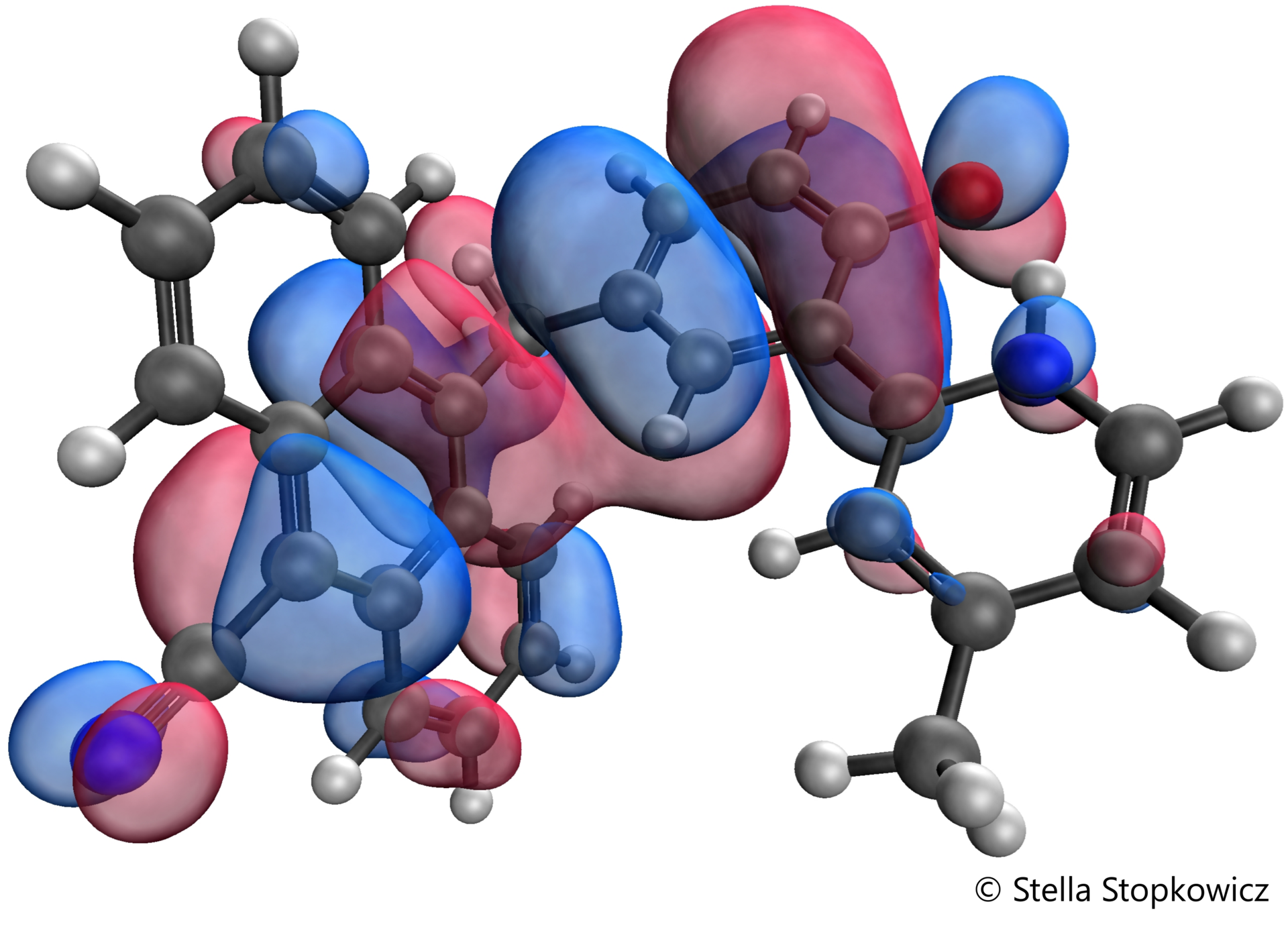Modelling
Research in the Chemical Institute is devoted both to the development and discovery of novel quantum-chemical methods, as well as the description of spectroscopic data as well as the underlying electronic structures.

The Stopkowicz group develops and applies highly accurate and efficient quantum-chemical methods for the description and study of atoms and molecules. Apart from the description of relativistic effects and the prediction of spectroscopic quantities like hyperfine parameters in rotational spectroscopy or NMR shifts, we have a focus on the description of molecules in unusual and unconventional chemical environments as molecules in cavities, in photochemistry or in strong magnetic fields. In addition, we develop methods that can be used for the treatment of larger molecular systems by employing Cholesky-decomposition techniques and the advancement of multiscale approaches.

The Munz Group explores fundamental concepts for catalysis and optoelectronics. Computational Chemistry is used to predict 1.) catalytic efficiency as well as 2.) physicochemical properties such as absorption, emission and magnetism. Quantum chemical methods are also applied to better understand reactive intermediates and correlate them with new reactivity patterns.

The groups of Kickelbick and Janka explore the synthesis and characterization of (functional) solids. Quantum chemical calculations using VASP (Vienna Ab initio Simulation Package) are an important tool, for example, to understand the stability of formed compounds by calculating the formation energies. Furthermore, theoretical calculations enable the analysis of the band structure, which allows conclusions about the bonding situation in the solid and the charge distribution, for example with the help of the electron localization function (ELF).
